本节我们来亲自创建一个序列并探索TestStand的一些功能。
首先打开序列编辑器,通过菜单命令“File >> New >> Sequence File”新建序列文件,或单击工具栏上的图标,如下图红色方框显示。
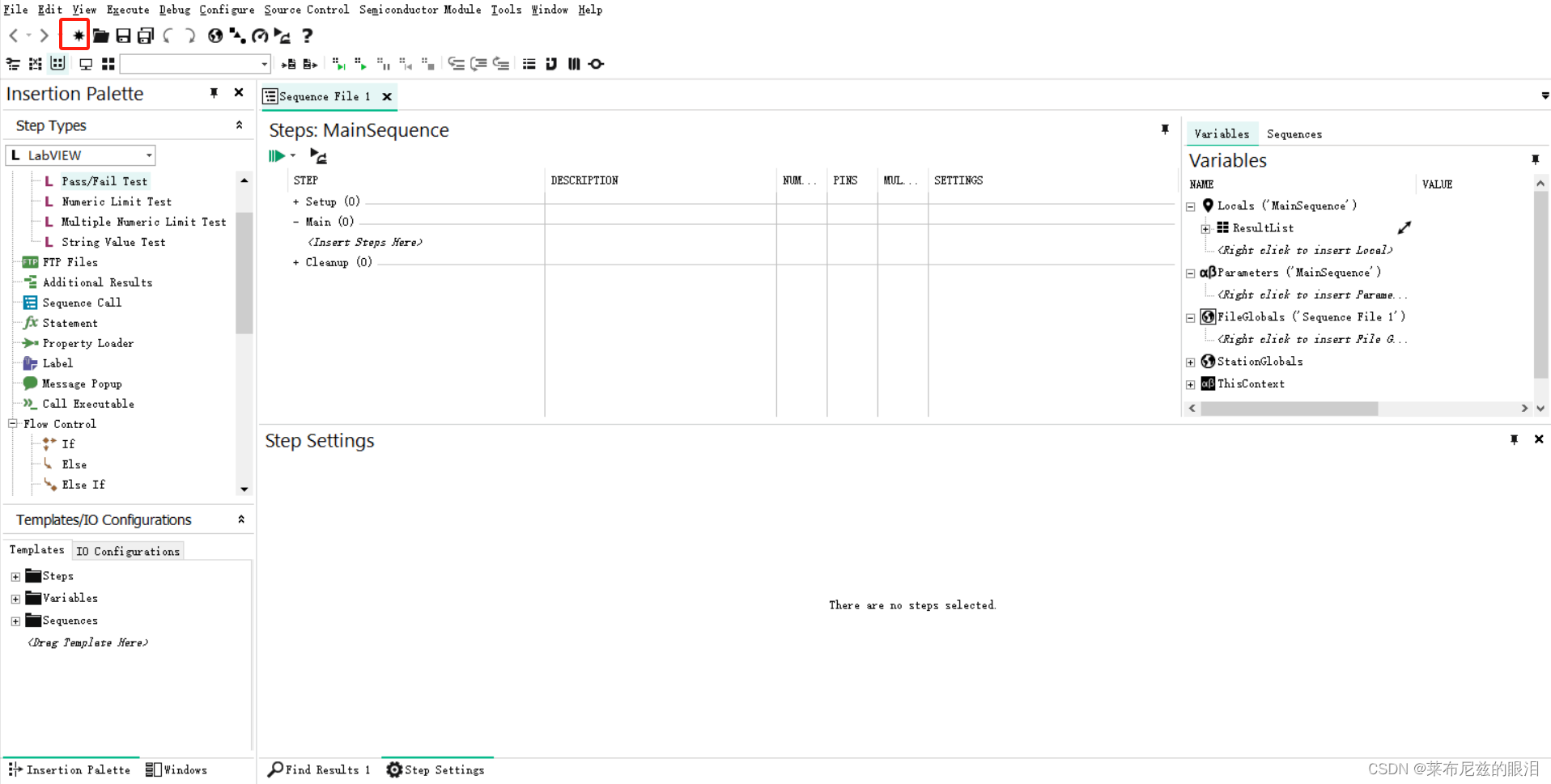
接下来就可以给序列中添加Step了。对于Step而言,主要分为三类:
1、使用任意模块适配器,如“Action”步骤类型,可以调用LabVIEW、C/C++ DLL等代码模块(如下图标号1所示,下拉框可选LabVIEW、LabWindows/CVI、C/C++ DLL、.Net等),TestStand可以传递参数给代码模块,有些还执行额外的操作,如将代码模块的返回值和限度值进行比较(下图标号2所示step可做相应操作);
2、使用特定模块适配器,如“Sequence Call”步骤类型就是指定使用Sequence模块适配器(如下图标号3所示);
3、指定特定的操作,但并不需要调用代码模块,如Label、Statement、Message Popup、Flow control等(如下图标号4所示)。
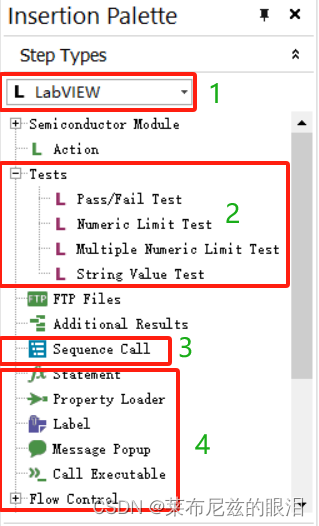
接下来我们简单创建一个特定操作适配器,暂时无需添加任何diamante模块。
第一步:从Insertion Palette框中选中Message Popup,并用鼠标左键按住不放拖入Steps: MainSequence中的Main下,如下图所示:
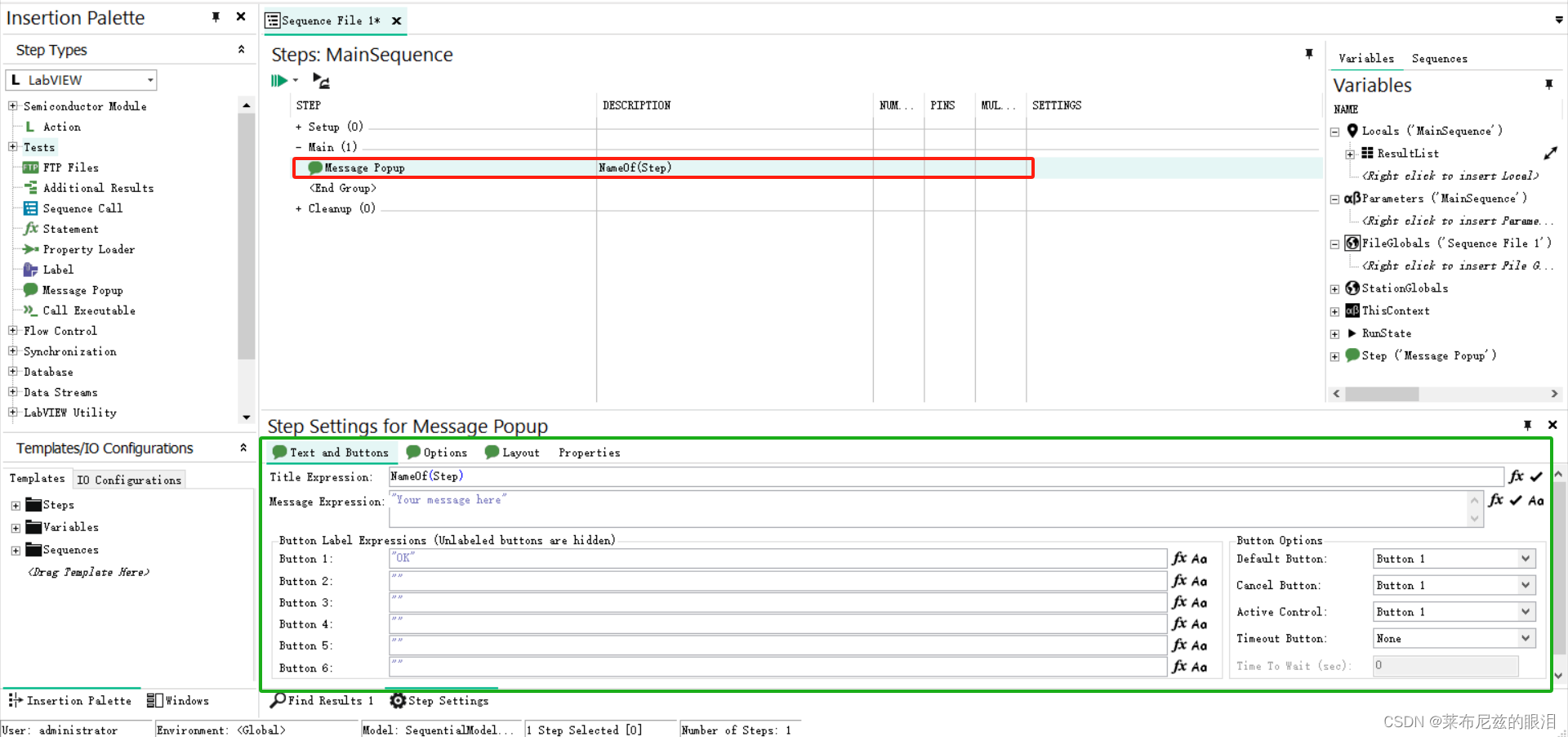
红框为我们刚放置的step,绿框是这个step需要设置的一些参数。

Title Expression:显示弹窗的标题,默认是NameOf(Step),即当前步骤的名称;
Message Expression:这里输入的内容将作为消息对话框窗口文本的主体;
Button Label Expression:按钮显示标签,这里可最多支持6个按钮,未填写文本的按钮将不显示;
Button Options:“Default Button”使用“Enter”作为快捷键,“Cancel Button”使用“Esc”作为快捷键,“Active Control”指在消息框弹出时默认聚焦在哪个按钮上,“Timeout”指超过特定时间仍没有按钮按下,系统默认激活当前设定的按钮。
接下来我们运行以下程序看看结果,点击Execute下single Test或点击红框运行箭头,可以执行程序。

下图为程序运行结果:
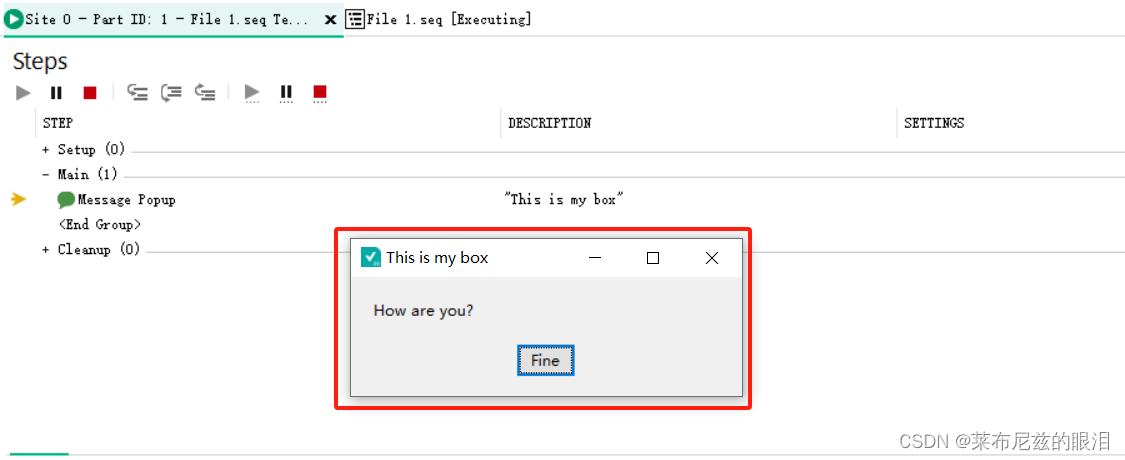
在某些场景下可能需要输入一段文本应答记录一些信息,可以在选项配置页面进行配置,如下图所示。 选择Enable Response Text Box可使能输入文本信息,选择Display Image or Web Page可使能输入图片或网页展示在弹框中。

下图展示了在Enable “Display Image or Web Page”时程序运行结果:
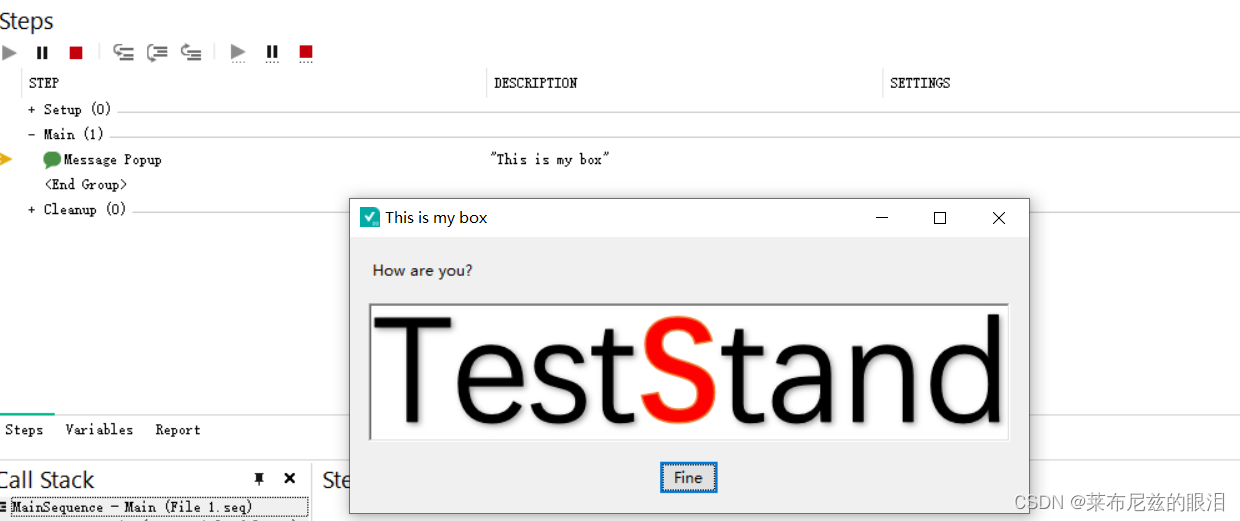
对于每个Step都会有自身的一些属性可以配置修改,通过选中Step在Variables中可以看到其所有的属性。对于Message Popup比较重要的属性有Step.Result.ButtonHit、Step.Result.Response、Step.TitleExpr、Step.MessageExpr。Step.Result.ButtonHit可以记录用户单击了哪个按钮,Step.Result.Response保存应答文本。
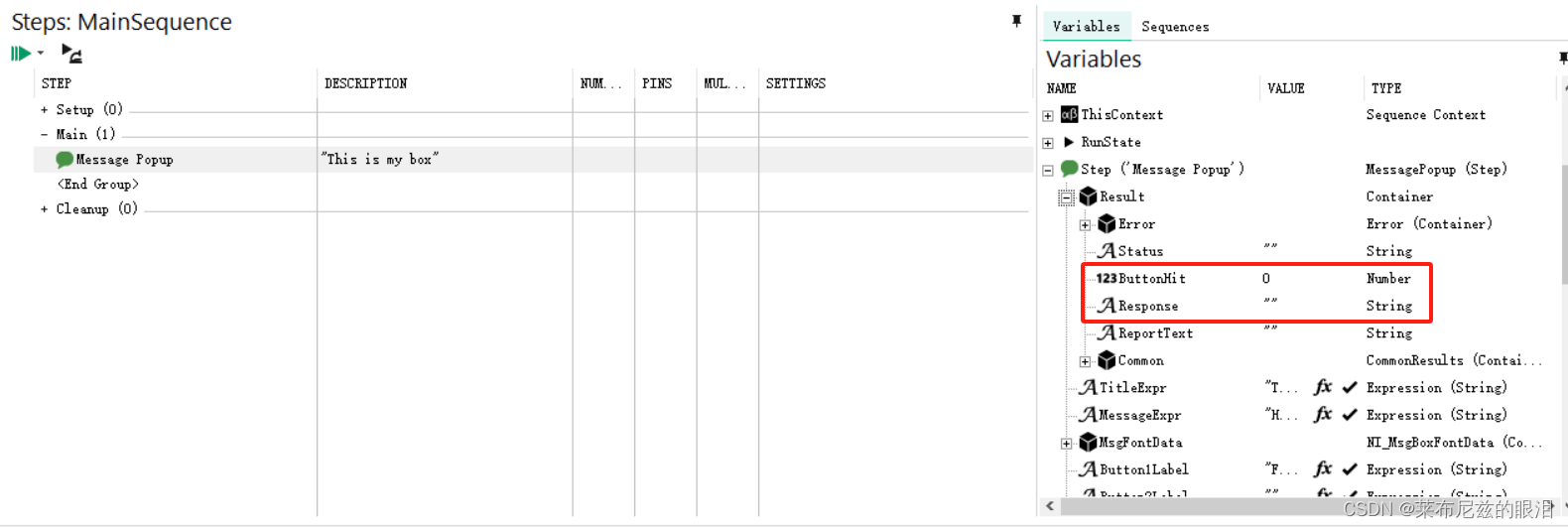
以上就是一个创建一个简单序列的执行过程,对于需要调用代码模块的程序我们后续在使用的时候可以介绍具体用法。本Message Popup程序我放至资源处,有需要可下载自行修改尝试。























 4166
4166











 被折叠的 条评论
为什么被折叠?
被折叠的 条评论
为什么被折叠?










